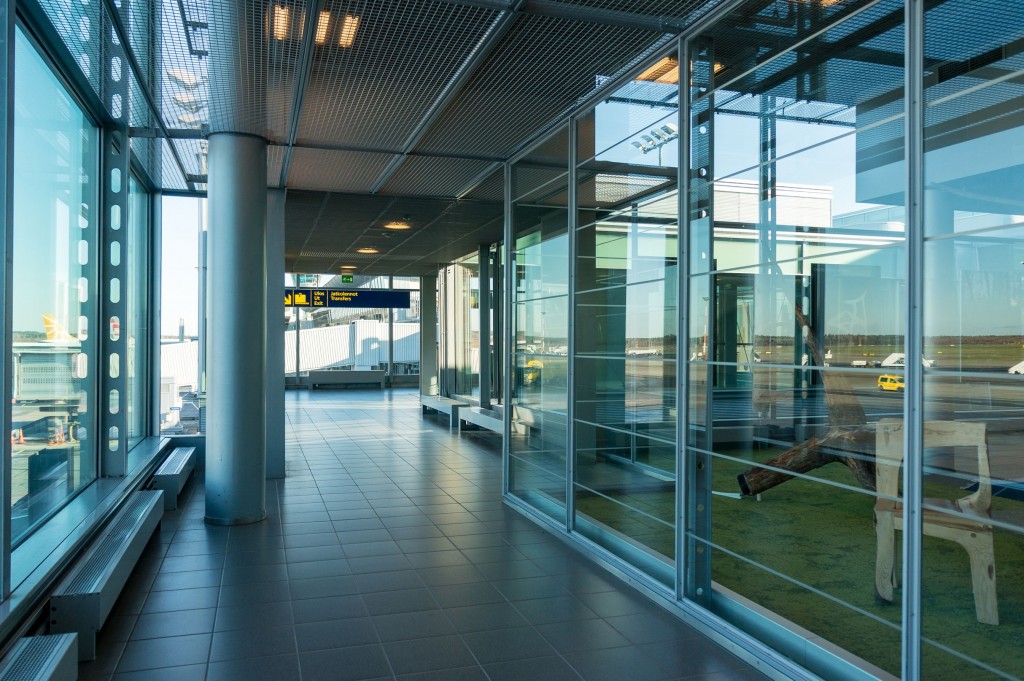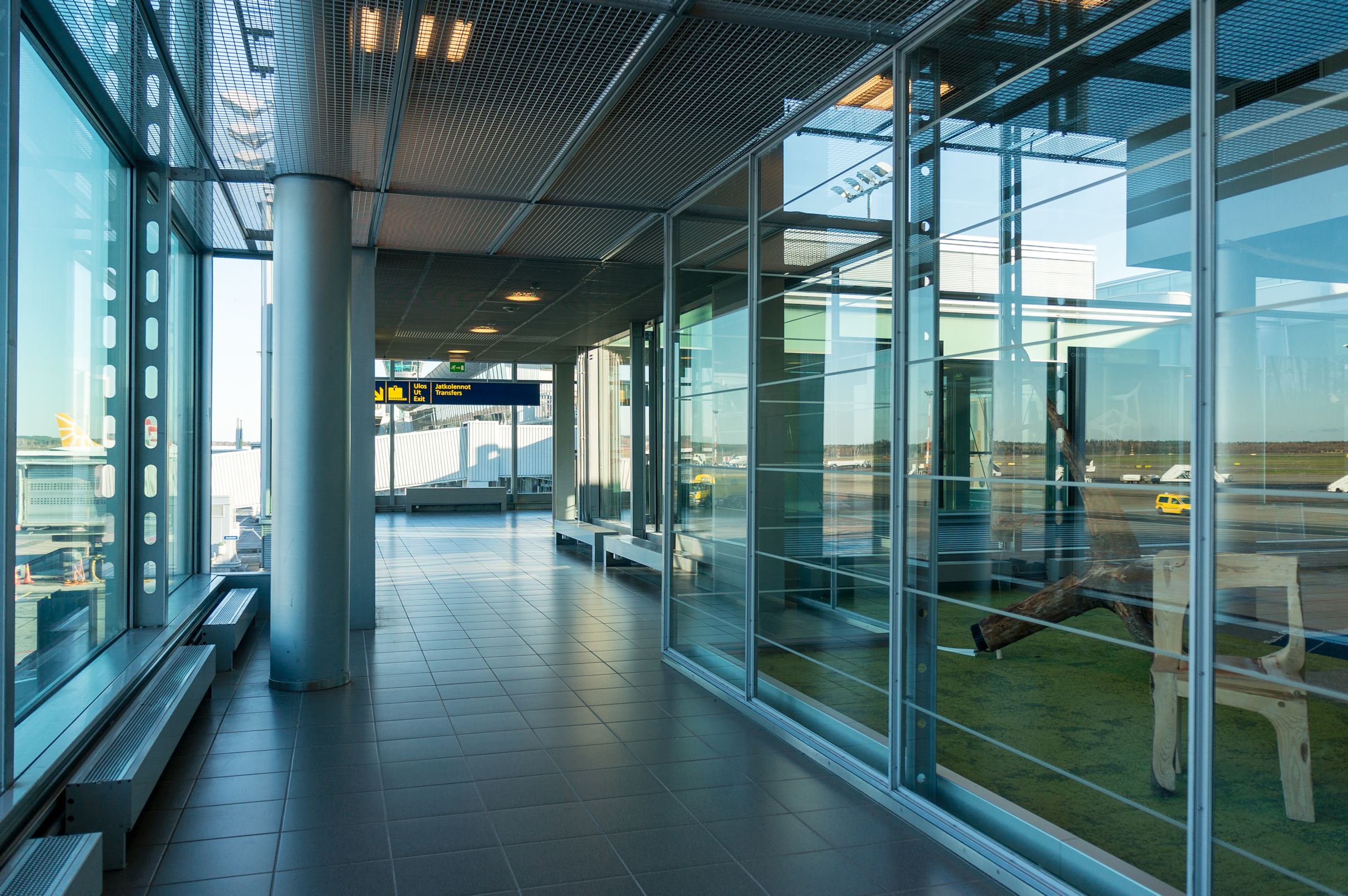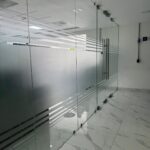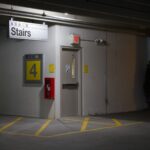This post was published in Doors & Hardware

When large expanses of glazing are desired in a wall that requires a fire rating, assemblies tested in accordance with ASTM E119 or UL 263 may be required.
The 2013 edition of NFPA 80 – Standard for Fire Doors and Other Opening Protectives, included several changes related to fire-resistance ratings, with new requirements for fire-resistance-rated glazing in fire doors and fire windows. These requirements were carried forward in subsequent editions of the standard. There are now two types of glazing for fire doors addressed by this standard – glazing with a fire-protection rating and glazing with a fire-resistance rating.
The definitions have changed slightly over the last few editions of the standard, but according to NFPA 80-2019 Chapter 3 – Definitions, these ratings are defined as:
- 3.3.57 Fire Protection Rating. For the purposes of this standard, the designation indicating the duration of the fire test exposure to which a fire door assembly or fire window assembly was exposed and for which it successfully met all acceptance criteria as determined in accordance with NFPA 252; ANSI/UL 10B, Standard for Fire Tests of Fire Door Assemblies, or ANSI/UL 10C, Standard for Positive Pressure Fire Tests of Door Assemblies; or NFPA 257 or ANSI/UL 9, Standard for Fire Tests of Window Assemblies. (See also Annex D.)
- 3.3.60 Fire Resistance Rating. The time, in minutes or hours, that materials or assemblies have withstood a fire exposure as established in accordance with the test procedures of ASTM E119, Standard Test Methods for Fire Tests of Building Construction
and Materials or ANSI/UL 263, Standard for Fire Tests of Building Construction and Materials.
Openings which carry a fire-protection rating are the common fire door assemblies that have been around for decades – tested in accordance with NFPA 252 or one of the UL test standards listed in Annex D of NFPA 80 – typically UL10C. Openings with a fire-resistance rating must comply with a different test – ASTM E119, or UL 263. UL 263 was not mentioned in NFPA 80-2013 but is referenced in NFPA 101 – The Life Safety Code, as well as the International Building Code (IBC). UL 263 was added to the 2016 edition of NFPA 80 as a test comparable to ASTM E119.
ASTM E119 – Standard Test Methods for Fire Tests of Building Construction and Materials, is typically used for testing assemblies used in construction – such as walls, floors, ceilings, and structural components. One of the basic differences between the tests for a fire-protection rating (NFPA 252 or UL10C) and a fire-resistance rating (ASTM E119 or UL 263) is that the latter limits the temperature rise on the unexposed surface to 250 degrees. In some cases, fire-resistance-rated products must also withstand the hose-stream test.
So where can we continue to install fire-protection-rated assemblies and where do we need to install fire-resistance-rated openings? One clue can be found in NFPA 80. In the 2013 edition and subsequent editions, Paragraph 6.3.3.3 states that transom frames and sidelight frames are permitted when a fire-protection rating of 3/4-hour or less is required. Paragraph 6.3.3.4 addresses transom frames and sidelight frames with a rating exceeding 3/4-hour, stating that fire-resistance-rated glazing tested as an assembly in accordance with ASTM E119 may be used in those locations. Installing fire-resistance-rated glazing in a fire-protection-rated frame is not sufficient when a fire-resistance-rated assembly is required – the materials must be successfully tested as an assembly.
Additional information about fire resistance and ASTM E119 testing can be found in the IBC. The term ‘fire-resistance rating” is defined in the 2015 edition as: “The period of time a building element, component or assembly maintains the ability to confine a fire, continues to perform a given structural function, or both, as determined by the tests, or the methods based on tests, prescribed in Section 703.” The period of time used in the test is not intended to correlate to the time the assembly will perform in an actual fire (because of the wide range of potential fire conditions), but it does provide a relative comparison between products and assemblies.
Both fire-protection-rated glazing and fire-resistance-rated glazing are required to be permanently identified to indicate the type of assembly the glazing has been tested for as well as the number of minutes of fire resistance or fire protection achieved. According to Table 716.1(1) in the 2021 and 2018 editions of the IBC (716.3 in the 2015 IBC):
- A “W” marking indicates glazing that has been tested to ASTM E119 or UL 263, which meets the wall assembly criteria.
- A marking of “OH” is used for fire window assemblies tested to NFPA 257 or UL9, including the hose stream test.
- For fire-protection-rated glazing (NFPA 252 or UL 10C), “D” indicates glazing that meets fire door assembly criteria, “H” indicates the hose stream test, and “T” is used for products that limit the temperature rise to 450 degrees maximum over a 30-minute period
In the 2021 and 2018 editions of the IBC, Table 716.1(2) (Table 716.5 in the 2015 IBC) includes a wealth of information about opening-protective requirements, including the required fire door assembly rating for each of the different types of wall assemblies. Limitations on the size of door vision panels are noted in this table, as well as the marking required for the glazing in those panels. This table also includes columns pertaining to sidelight and transom assemblies, noting that fire-protection-rated assemblies are not permitted for locations requiring ratings of more than 3/4-hour. Consistent with NFPA 80, the IBC allows fire-resistance-rated assemblies for sidelight or transom frames with a rating of more than 3/4-hour.
One important requirement to note is that where fire-resistance-rated assemblies are shown in Table 716.1(2)/716.5, the required rating of the assembly is the same as the rating of the wall. For example, a fire-resistance-rated sidelight frame installed in a 2-hour exit enclosure wall is required by the table to have a 2-hour rating. Typically, fire-protection-rated assemblies have a lower rating than the rating of the wall (for example, a 90-minute fire door assembly in a 2-hour wall). Refer to this table for specifics on the required ratings for each type of assembly.
Another location in the IBC where fire-protection-rated openings are addressed is Paragraph 707.6 – Openings. This paragraph limits openings in a fire barrier to a maximum aggregate width of 25 percent of the length of the wall, and states that the maximum area of any single opening must not exceed 156 square feet. However, Exception 3 allows more/larger openings when they are fire-resistance rated: “Openings shall not be limited to 156 square feet or an aggregate width of 25 percent of the length of the wall where the opening protective has been tested in accordance with ASTM E119 or UL 263 and has a minimum fire-resistance rating not less than the fire-resistance rating of the wall.”
Fire-resistance-rated assemblies and glazing are often exempt from the limitations that apply to fire-protection-rated assemblies and glazing, so assemblies tested to ASTM E119 or UL 263 can often help to provide larger expanses of glazing and openings than would be allowed if the assemblies were tested to NFPA 252 or UL 10C. For clarification on which type of glazing or opening protectives are required, consult the code that has been adopted in the project’s location, or the Authority Having Jurisdiction.
~~~
Test standards referenced in this article:
Fire-Protection-Rated Assemblies:
- UL 10C – Standard for Positive Pressure Fire Tests of Door Assemblies
- NFPA 252 – Standard Methods of Fire Tests of Door Assemblies
Fire-Resistance-Rated Assemblies:
- ASTM E119 – Standard Test Methods for Fire Tests of Building Construction and Materials
- UL 263 – Standard for Fire Tests of Building Construction and Materials
Fire Windows:
- UL 9 – Standard for Fire Tests of Window Assemblies
- NFPA 257 – Standard on Fire Test for Window and Glass Block Assemblies
You need to login or register to bookmark/favorite this content.







Nice article. Good information.
these two definitions confuse me for several years, now it is clear.
thanks!
Great article Lori. I have come back to this several times. A couple of questions this time:
Does fire-resistant glazing by nature of the testing in E-119 always meet the Temperature Rise and Radiant Heat Transmission requirements (250 degrees)?
Is specifying compliance with ASTM E-119 or UL 263 sufficient?
Hi Michael –
Yes, the temperature rise limitation is part of the ASTM E119 and UL 263 tests, so I think specifying an assembly that complies with those test standards should be sufficient.
– Lori
Hi Lori
For fire shutter, do you know any shutter product with ASTM E119 in the market? Is a solution that the fire protective rated shutter (UL10B) can equal to fire resistance rated wall/glass if the area with sprinkler system?
Hi Terri –
I have not seen a shutter rated to ASTM E119, but I don’t get involved with shutters much, so someone might have one. The UL 10B shutter could be approved by the AHJ as an equivalency, but they would have to decide.
– Lori
Hi Lori
Thanks for your reply.
Best Regards
Terry
Hi Lori,
I have some pairs of 90 minute doors leading into a vestibule at the stairwells/elevator with about a 3/4 window. The frame is a standard 3 sided frame with no sidelites/transoms. The project also has some large window walls around the stairwell areas that call for E119. There was no mention of the E119 rating for these 90 minute pairs until they went to glaze the doors. Is E119 rating only when you have Sidelites and transoms or would these standard pairs require the E119 rating. This is a building on a college campus in Montana. The building has sprinkler systems. I thought they should be able to get away with firelite NT glass?
Hi Todd –
I have typically seen the E119 testing for sidelights and transoms, not 3-sided frames – especially in a sprinklered building. But I can’t say for sure that the doors in question would not need to be fire resistance rated doors tested to ASTM E119.
– Lori